It seems there might be some confusion in your request. Based on your previous question about the "Deo Tibba Expedition," I assume you might have meant "Ladakhi Peak Expedition" this time, rather than "Deotiba." Ladakhi Peak (sometimes spelled Ladhaki) is a distinct mountaineering objective in the Pir Panjal Range near Manali, Himachal Pradesh, India, standing at approximately 5,342–5,577 meters (17,526–18,300 feet) depending on the source. It’s less technical than Deo Tibba but still offers a rewarding challenge with stunning Himalayan views. If I’ve misunderstood and you meant a different peak, please clarify!
Below is a sample itinerary for a Ladakhi Peak expedition, crafted based on typical mountaineering routes in the Manali region, such as those to Beas Kund and surrounding peaks like Ladakhi. This is a 9-day plan, adjustable for weather, group fitness, or logistical needs.
Itinerary (9 Days)
*Day 1: Arrive in Manali (2,050 meters / 6,726 feet)*
- Arrive in Manali (e.g., by overnight bus from Delhi, ~14 hours).
- Check into a hotel or guesthouse, meet the team, and complete gear checks.
- Rest and acclimatize to the altitude. Overnight in Manali.
*Day 2: Drive to Solang Valley and Trek to Dhundi (2,700 meters / 8,858 feet)*
- Morning drive from Manali to Solang Valley (~13 km, 30-45 minutes).
- Trek from Solang to Dhundi (2-3 hours, ~6 km), a shepherd’s meadow with high peaks in view.
- Set up camp at Dhundi. Overnight in tents.
*Day 3: Trek from Dhundi to Bakarthach (3,300 meters / 10,827 feet)*
- Trek 4-5 hours (~6-7 km) through green slopes and meadows.
- Reach Bakarthach, a scenic campsite surrounded by peaks like Shitidhar and Hanuman Tibba.
- Camp overnight and acclimatize.
*Day 4: Trek from Bakarthach to Beas Kund (Base Camp) (3,650 meters / 11,975 feet)*
- Trek 2-3 hours (~4 km) to Beas Kund, a small lake and the base camp for Ladakhi Peak.
- Set up base camp near the Beas Kund Glacier.
- Afternoon: Rest or light acclimatization walk. Overnight in tents.
*Day 5: Acclimatization and Training at Base Camp*
- Rest day at Beas Kund to adjust to the altitude.
- Training session: Practice using crampons, ice axes, and ropes for the climb ahead.
- Early night in tents to prepare for the ascent.
*Day 6: Ascend to Camp 1 (4,650 meters / 15,256 feet)*
- Trek and climb 5-6 hours from Base Camp to Camp 1, often near a col or ridge.
- Cross moraines and snow patches; some sections may require fixed ropes.
- Set up Camp 1. Rest and hydrate overnight in tents.
*Day 7: Summit Day (5,342 meters / 17,526 feet) and Return to Base Camp*
- Start pre-dawn (2-3 AM) for the summit push (6-8 hours up).
- Climb snow slopes and rocky sections to Ladakhi Peak’s summit, offering panoramic views of Pir Panjal and Dhauladhar ranges, including Hanuman Tibba and Deo Tibba.
- Descend to Camp 1 (3-4 hours), then continue to Base Camp (2-3 hours), totaling 10-12 hours.
- Celebrate at Base Camp. Overnight in tents.
*Day 8: Trek from Beas Kund to Solang Valley, Drive to Manali*
- Trek back 5-6 hours (~10-12 km) from Base Camp to Solang Valley via Dhundi.
- Drive to Manali (~30 minutes).
- Check into a hotel, relax, and enjoy a warm meal. Overnight in Manali.
*Day 9: Depart from Manali*
- Depart for your next destination (e.g., Delhi by overnight bus, ~14 hours).
- Expedition ends.
### Notes:
- *Gear*: Requires mountaineering equipment (ice axe, crampons, harness, ropes) and warm clothing for high altitudes.
- *Best Season*: May-June or September-October for clearer weather and manageable snow.
- *Difficulty*: Moderate; suitable for those with some trekking experience, though prior mountaineering skills are a plus.
- *Permits*: May require clearance from the Indian Mountaineering Foundation (IMF), arranged via operators in Manali.
- *Variations*: Some itineraries extend to 10-12 days with extra acclimatization or buffer days for weather.
This itinerary assumes a start from Manali, a common base for Ladakhi Peak expeditions, and follows a route via Beas Kund, a typical approach. If you’re seeking a specific operator’s plan, more details about your preferences (e.g., duration, group size), or info on a different peak, let me know, and I’ll tailor it further! What’s your next question?
